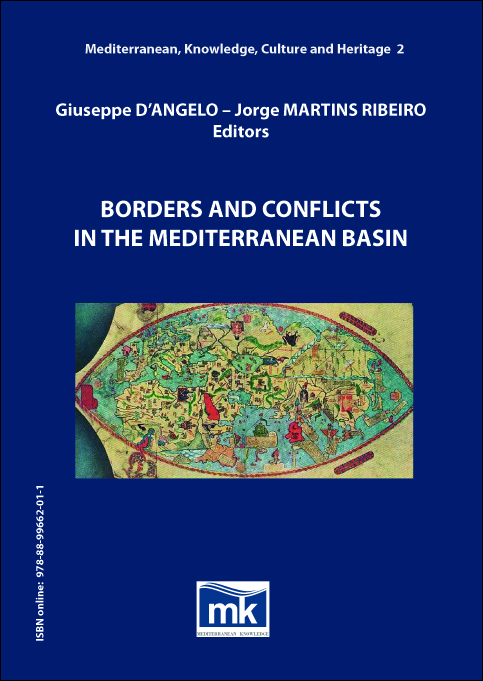Borders and Conflicts in the Mediterranean Basin
Abstract
The aim of this book, indeed, is re-reading the history of the Mediterranean basin starting from a double interpretative key: sea and border. In order to avoid possible misunderstandings it is good to clarify the sense of these two words, as the sea – and the Mediterranean in particular – is itself a border.
The starting point is to re-read the past of the Mediterranean and to move the observation point from the land to the sea aims. This perspective wants to carry out a de-construction and to start the cancelation, step by step, of the consolidate ethnocentrism of our analyses, in the sense given to the word by William Graham Sumner (1906). It aims, in other words, at avoiding to look at members, structure, culture and history of local groups, other than one’s own, with reference to their own values, habits and rules, as this interpretation of the other unavoidably spurs to overestimate one’s own culture, devaluating that of the others.Â
Secondly, after this first approach, it is possible to build an interpretative model able to recognize what is different from one’s own culture – the alien, the stranger – not as an enemy, but simply as “differentâ€. This process has a dedicated place: the border, namely the place where diversities come into contact, where contamination is accepted, a territory where what is different does not scare, as the otherness is lived as an opportunity, the contamination is an occasion of growth, the hybrid is the rule.
Authors who publish in the book series Mediterranean, Knowledge, Culture and Heritage agree with the following points:
- The author(s) guarantee(s) that the book is original and that it has not previously been published nor sent to other publishers for consideration.
- The author(s) declare(s) that the book does not violate the copyright of third parties and assume(s) the full personal and financial responsibility for any legal action which may be brought by third parties against the ICSR Mediterranean Knowledge
- The author(s) retain(s) the rights. The ICSR Mediterranean Knowledge is allowed to publish the book in digital edition with licence Creative Commons Attribution Licence 4.0 (CC BY-NC-ND) or in any other form that the publisher considers opportune. The Licence allows others to share the work, provided that they indicate the authorship and the initial publication in this Book Series.
- The authors can establish arrangements with non-exclusive license to distribute the published version of the book (eg. deposit it in an institutional archive), indicating that it was first published in the book series Mediterranean, Knowledge, Culture and Heritage.
- The author(s) can distribute the book online (eg. on their website) only after that it is published in the book series Mediterranean, Knowledge, Culture and Heritage (see The Effect of Open Access).
